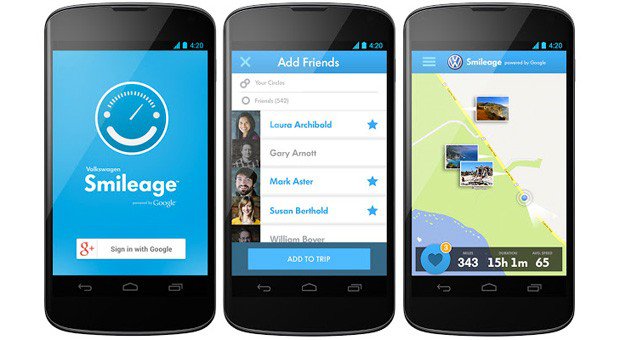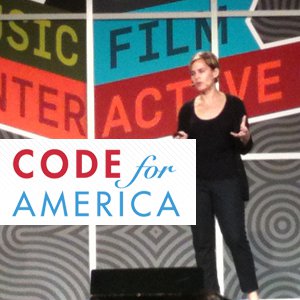Jul29News
SS+K’s Brad Kay in Digiday on Publicis-Omnicom
SS+K Partner and President Brad Kay was quoted in Digiday on the merger of Publicis Groupe and Omnicom Group and how small, independent agencies should respond:
“Rivals: Smaller agencies will gleefully point to the 130,000-employee behemoth as all that’s wrong with the mechanized, commoditized ad world. The sheer amount of bureaucratic infighting during an integration will provide an opening for rivals. What’s more, the clear conflicts this presents will provide an opening for WPP and other rivals to swoop in to woo away big clients. Brad Kay, president of independent shop SS&K, summed it up this way: “To-do’s for small, independent agencies: 1) review client list of Omni-Pub; 2) identify top talent; and 3) exploit six months of utter distraction.”
Read more here.
TopJun21Observations
But Do People Really Want Video on Instagram?
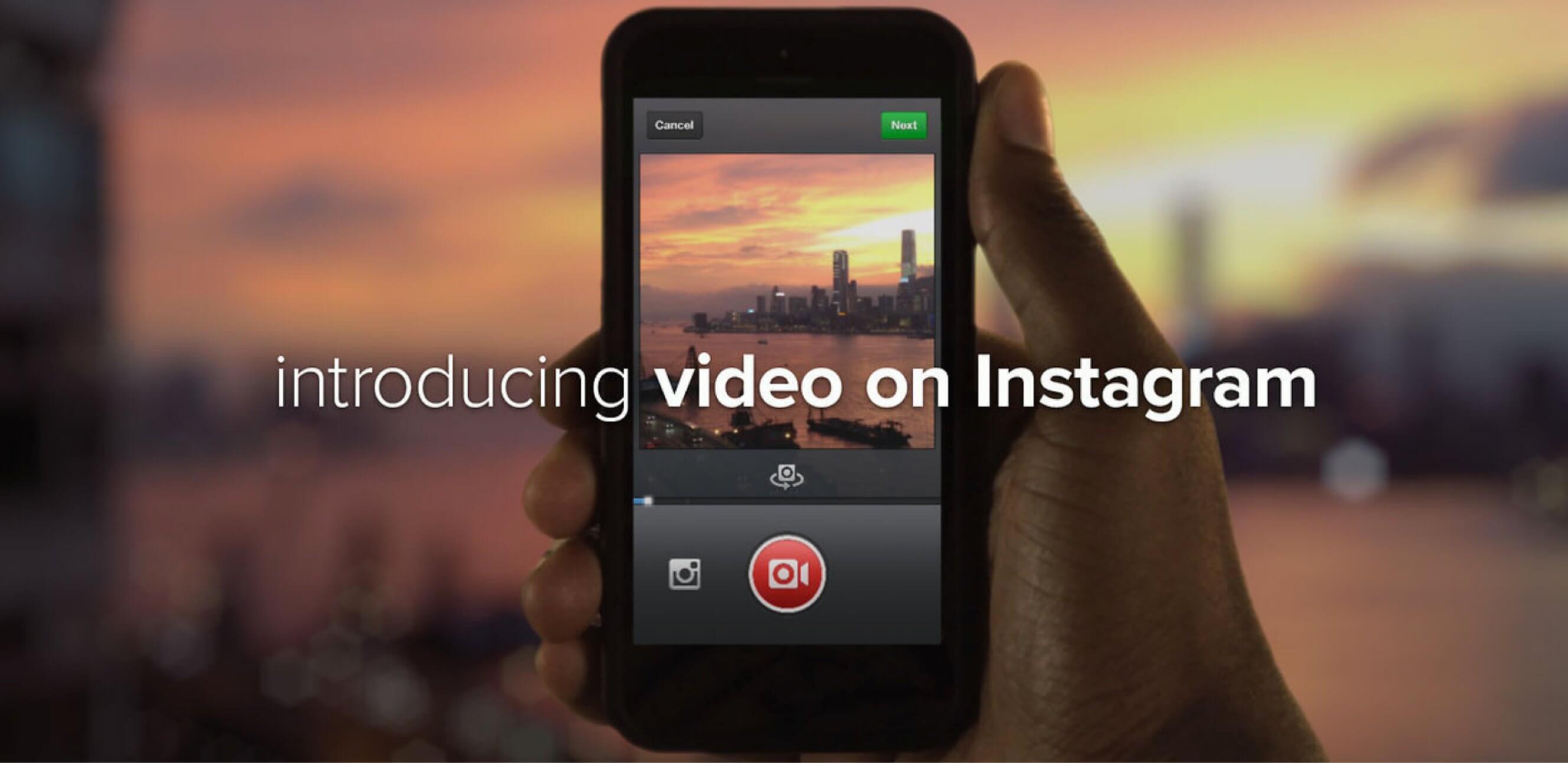
This afternoon Facebook held an event to announce video capture would finally be available to Instagram’s 130 million users. The experience of creating a video is ripped right from Vine (touch and hold to record, lift your finger to pause), which is good because Vine was the first mobile video product to be welcomingly easy to use. Instagram video also has some interesting new bells and whistles that differentiate it from its video predecessors– video stabilization, filters, and the ability to import content, to name a few. With Instagram video you certainly have the ability to create a more visually compelling product than ever before, in a way that feels very native to the Instagram experience. But I have to ask, after the initial excitement is over, will people really want that?
More
Part of the magic of Instagram is its innate ability to make any photo instantly attractive. It essentially created the idea of “one touch magic button” apps that is now a benchmark for how simple and powerful a mobile product should be. But while adding stabilization and a filter might make any video more attractive than it was to start with, it does not in itself make every video interesting enough to spend 15 seconds with. In fact, applying the promise of Instagram magic to video content might even make viewers more upset when they stop flipping through beautiful photos long enough to watch.
That’s my biggest concern with Instagram video. It’s great that Instagram has developed such amazing tools to make regular video better looking. But if the Instagram community starts being bogged down by :15 second videos that would have been a lot more interesting and native to the experience as photos, it will make spending time in Instagram a lot more weighty. Almost like your friends ran a :15 second ad in the middle of your beautiful photo stream. I’m already feeling this in the first day– browsing the feed is slower, and it’s more complicated to discover new interesting content in the “Explore” tab. Myself and many others open Instagram countless times a day to briefly scan through the latest photos for a moment break and smile. A steady stream of sub-par video will make that a bigger lift, and less enjoyable.
Now how does this all compare to Vine? Vine has been so successful because if provides the right balance of capability and confinement. In 6 seconds people can be as creative as they want to be (and there’s been some truly impressive Vine art). But 6 seconds also limits uninteresting content in a way that doesn’t disrupt the flow of scanning content that is necessary in social platforms like these. Vine’s limitations somehow lower the bar for what video content has to achieve to be compelling, and that’s what so differentiating and impressive about it. It’s also established itself for what it is– browsing the Vine stream you get exactly the experience you’re looking for. Wouldn’t it be strange if people could suddenly start taking pictures with their Vine app?
So while I’m very impressed with the video product that Instagram has put together, and I’ll probably even use it every once in a while, I don’t think it’s going to be the market disrupter that Instagram originally was. I don’t think it’s going to be the magic bullet to make ammateur video instantly more proliffic and compelling than before. And I do actually think one of two things will happen– people will not use it all that often, or Instagram will add some sort of view filter that lets people browse only photos if they want to, to preserve the amazing experience they’ve been cultivating since their launch. And Vine, and other single-purpose apps, will continue to flourish despite Facebook’s relentless attempt to take the whole cake.
At least I hope so.
Disclaimer: This content is cross-posted from Kevin’s personal blog. The SS+K Lab that he co-founded built the popular Vine search engine VineViewer and has previously built applications for Instagram, as well. We love both equally 🙂
Less
Jun19Observations
Early Facebook Hashtags Insights and Recommendations
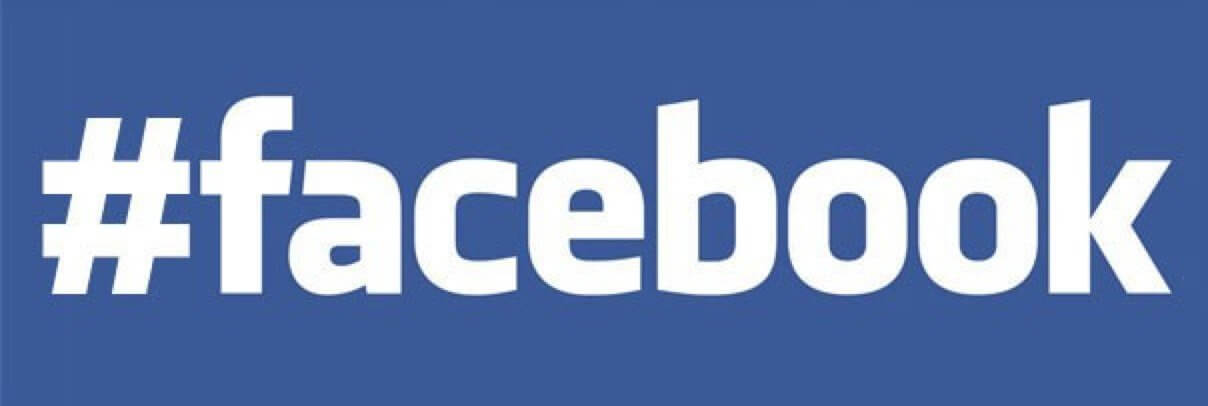
On June 13th Facebook announced the implementation of hashtags, allowing users to add context to posts and aid content search + categorization. While Facebook had resisted including one of Twitter’s most popular features for several years, its acquisition of Instagram made hashtags all but a certainty. At face value Facebook’s initial implementation is a similar experience as on Twitter, where clicking on a hashtag allows you to immediately explore other posts by users who have tagged their content with the same keyword. However, nuances of the Facebook platform make hashtags a very different experience from other platforms. The following are initial insights and recommendations for brand implementation based on our early testing:
Exploration is a More Engaging Experience Than on Twitter
Facebook hashtag exploration can be more visually pleasing experience than Twitter. This is due to the much more prominent usage of imagery and video on Facebook, allowing the user to quickly digest rich media content without having to click a link to expand or leave the site as you do on Twitter. While this speeds up individual content consumption, inversely it slows down the scannability of a large amount of hashtagged posts given the diverse nature of content types and how they are showcased.
TIP: Tie hashtags to high impact, visual content posts to help cut through the clutter of hashtag streams
More
Facebook’s More Personal Nature Makes Hashtags Searches Awkward
Facebook is built around the idea of creating meaningful connections, where Twitter is focused more on quick conversations and content “snacking”. This built up user expectation of meaningful personal connections disrupts the Facebook hashtag experience because it can be jarring to find yourself peering into random, disconnected user’s posts. As hashtag adoption increases, Facebook will likely have to evolve the way hashtag streams are shown, with a focus on people and brands that are closer to your own interests, increasing relevancy and theoretically engagement. Alternatively, users may begin to embrace more public sharing to embrace the open stream that hashtag provides.
TIP: Focus content on being as personally tailored to its potential audience as possible to increase its relevance to users’ searches
Hashtags Infuse Open Graph Search with Content for the First Time
In its initial incarnation Facebook’s Open Graph Search Engine had a major weakness– it only indexed metadata, such as likes, as opposed to actual page content. This initial content provided little value to social search because it had no sense of time; rather, it often revealed outdated profile information about users (for example: a movie someone liked two years ago may not reflect the person’s tastes today). Facebook hashtags broke down the wall between profile search and content search by surfacing any hashtagged page content in Open Graph Search for people to discover. With hashtags, Facebook’s search functionality can now return valuable real-time content to its users, more in line with what users likely expect from a social media search engine.
TIP: Before adopting a hashtag, check how it’s being used already; incorporating popular hashtags can insert your brand into the conversation stream, while creating new unused terms can help tie together a brand campaign
Hashtags are Easy to Spam Because Most Personal Content is Private
With many users opting to keep their profiles and post content private, the content appearing for any particular hashtag search is often mostly filled with page posts. Unlike Twitter, where the average user keeps their profile public, hashtag search results will be largely incomplete in comparison to their actual overall usage. Until users start incorporating hashtags into public posts more regularly, brands who excessively hashtag posts may begin to be seen as spammy. Hashtag streams will also likely become a target for less legitimate pages to spam and takeover.
TIP: Manage how often a hashtag is used to avoid being seen as spammy
The Mold Isn’t Dry with Much More Still to Come
Hashtags on Facebook are still in their infancy with inevitable updates to come: clickable hashtags for mobile, showcasing hashtag usage/trends and paid media support to name a few. As hashtags become more pervasive, their functionality may also impact user behavior. With so much still to be done to give hashtags their complete implementation its tough to say whether or not Facebook’s latest development will be a success or go the way of the “Poke.” Regardless we are hopeful of the opportunities that hashtags will provide brands in expanding their reach to new audiences in engaging and dynamic ways.
Less
Mar27Observations
SS+K at #SXSW

SS+K’s delegation to SXSW 2013 is safely back in NYC full of ideas, inspiration and tacos. From interplanetary travel to a coat made of wood to Grumpy Cat, here are the top things that we’re still talking about:
1. Go big and phone home: We’re an industry preoccupied with firsts, but sometimes we let practicalities get in the way of our big, audacious goals. Keynote speaker Elon Musk is transforming three industries through his companies – space exploration (SpaceX), automotive (Tesla), and energy (SolarCity) – and he sees his mission as helping to make humanity an interplanetary species before Earth becomes uninhabitable [in about 500 million years or so]. If that’s not a big audacious goal, we don’t know what is. So the next time we let practicalities limit us, we’re going to think of Elon and go bigger.
More
2. #artcopycode: It has been about a half century since Bill Bernbach first thought to put copywriters + art directors together. Google thinks it’s high time we make technology just as central to the creative process – they call that model #artcopycode. Their first experiments with the model were a talking sneaker and an innovative “Smileage” app for Volkswagen.
3. Tune in: It wouldn’t be SXSW if we didn’t discover a few local Austin bands to blast during late nights at the office. Emily Bell got us boot-scooting and Black Pistol Fire and Quiet Company inspired some rocking out over BBQ. We also met Rico Gagliano, who turned us onto his Dinner Party Download podcast – we recommend you check it out.
4. The signal + the noise: Nate Silver got to give a keynote, but we were more interested in smaller panels about how developers are using “big data” to separate the signal from the noise to create better user experiences. Wouldn’t it be great if you could say to Siri “book my flight to Austin” and it knew just what flight you meant, and what seat you wanted, and which credit card to use? The information is out there in your inbox, texts, credit card data, etc. – the trick is finding the right information and applying it the right way. Xobni CEO Jeff Bonforte thinks “robot apps” that can do this and more are in our near future.
5. Speaking of big data: We heard how Code for America (aka, Peace Corps for Geeks) is using metrics and relatively simple technology to help cities work better, and at the same time, give their citizens more power. The secret isn’t in the code, but in the culture that allows for change.
6. Speaking of big data, cont’d: Dennis Crowley, founder of Foursquare, has A LOT of data. Through data visualization, he showed just one example – a time lapse of Foursquare activity in New York City during Hurricane Sandy.
7. Watch out for splinters: MakerBot CEO Bre Pettis wore an unusual coat to his SXSW Keynote. Turns out it was made of wood – and prototyped using a MakerBot 3D printer. We’re thinking we’ll see more unusual materials and design methods on the catwalk as 3D printing takes off.
8. Vine bears fruit: As you would expect, every moment at SXSW was documented by every mobile app imaginable. For the first time, that mix included newcomer Vine, a Twitter-owned service that lets users take and share 6-second videos. To tap into the excitement, SS+K created South by 6 Seconds, or SX6s, a website that aggregates Vines around SXSW and allows users to easily search + explore them – and it struck a chord with coverage on sites like Creativity and PSFK. We also used all of those Vines to create a highlight reel of the whole festival – it’s the next best thing to being there.
Those were just a few of the highlights of a jam-packed four days. And we’re already looking forward to doing it again next year.
Less
Jan18Observations
The Social Generation: The Youth Vote and the Future of Progressivism

This article was originally published on the Huffington Post.
As the inauguration approaches and Washington gears up for battle, Americans tired of seeing our government held hostage by rigid ideologues, take heart. Help could be on the way in the form of young voters who flexed their political muscle in November.
More
Remember the predictions that young voters had had their fill of Barack Obama and wouldn’t show up in the voting booth? Whoops. One point twenty five million more of them voted for the president in 2012 than in 2008. If Progressives build on what drove them back to the polls, then they have a chance to secure an enduring majority.
That, of course, is a big “if.” The challenge is remaining faithful to the surprising complexities of young Americans’ views.
Our research shows that young people have a complex but coherent set of values that sets them apart from previous generations. They value open-mindedness and inclusivity, and abhor injustice. They embrace different races, sexual orientations and views. They are individualists who want to put their own innovative mark on the world. However, their individualism is wrapped in the collective. They collaborate in their personal lives and support it in politics. The Progressive bedrock value of communitarianism is in their DNA — to them, we are better and stronger together.
Yet, they are not wooly-headed dreamers, but pragmatic idealists. They came of age during the 2000s — the decade of 9/11, two wars and the Great Recession. They are ready to work hard, applying their mastery of technology and belief in education to get ahead. They believe in themselves and think their generation is uniquely capable of solving big problems. They admire Mark Zuckerberg and suspect that they, too, could be successful entrepreneurs. They are optimistic, but know their American Dream will be different than their parents’. And that’s OK by them; they think the Boomer generation was blinded by the materialism that caused our economic troubles.
The hard part for Washington to admit is that young Americans think politics and politicians aren’t worthy of their time. Typical politics, and political speech, alienates them. Yet, for them, President Obama is different. They feel he “gets” them and the way their modern world works. His life speaks to them: his international, mixed-race roots; the fact that he and his wife finished paying off their student loans only a few years before entering the White House; his comfortable use of technologies like Reddit, Twitter and YouTube.
Beyond his personal attributes, the president’s priorities proved his values were theirs: making college and healthcare more affordable; ending the wars in Iraq and Afghanistan; maintaining a women’s right to choose; calling for a fair tax code; investing in clean energy; reforming Wall St.; and perhaps most notably, supporting gay marriage.
These policies reflect young people’s idealism but also their practicality. They reason it is downright stupid, especially during a challenging economy, to discard children of illegal immigrants, gay Americans, young women dependent on Planned Parenthood for everyday healthcare, or people with preexisting medical conditions. Yes, it’s morally wrong, but it’s also bad economics. Because who knows where the next Zuckerberg will come from?
The really bad news for most Republicans is that young people don’t think they get any of this. How could they, if they oppose gay marriage, abortion rights, or enlightened approaches on immigration, education, foreign policy or the environment? Most young Americans see the Right as too narrow, focused only on big business and an outdated way of life that’s not coming back.
But what rankles them most is the Right’s perceived intolerance. How dare they impose their values on us? Who are they to keep any American from living happy, hectic, productive, confusing, meaningful, boring lives — just like the rest of us?
Perhaps nothing in the presidential campaign better captured how far removed the Republican establishment is from young Americans than its reaction to the TV ad our firm created in which the actress Lena Dunham endorses President Obama. Viewed over 2.5 million times on YouTube, Ms. Dunham advised young people why their “first time” was so important. Young people got the joke, but Fox, Rush Limbaugh and the rest of the Right erupted. Erick Erickson, editor of RedState.com, said the video was “further proof we live in a fallen world destined for hell fire.” Could there have been any better evidence that the Right doesn’t get it?
Young Americans’ pragmatic idealism gives Progressives, and the president, a built-in advantage in current debates. Young Americans believe it’s no longer possible to defend the indefensible: you can’t argue against more gun control in light of Newtown; against a more fair tax system in light of our country’s income inequality; against immigration reform in light of our historic embrace of immigrants; against climate change in light of extreme weather like Sandy; and against gay marriage in light of the obvious inequities.
To young Americans, these Progressive ideas are good for both the soul and a secure economic future. It’s not about politics, but their unique value system molded in the blast furnace of our changing world. It’s shrewd and inspiring, and for them, a blueprint for life.
Less
Jan14Observations
7 Discoveries and Observations From the CES 2013 Conference Floor
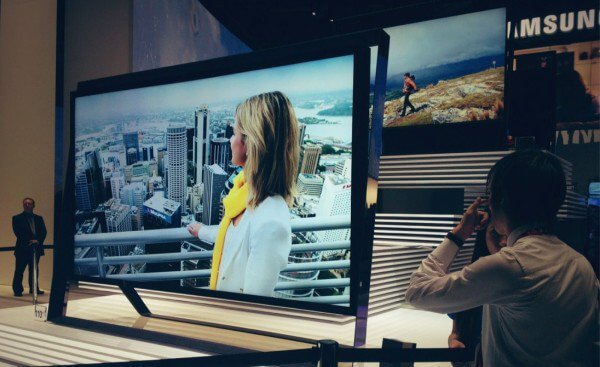
1. No matter how good you think your TV is now, it can always get better.
This year television manufacturers showed off new Ultra High Def (UHD) televisions that have 4K resolution, or about four times the resolution of today’s high definition screens. These big and beautiful TV’s show virtually no pixelation when displaying UHD content (though upscaling non-UHD content may be less compelling). Also present were new curved televisions that enable viewers to have a more balanced viewing experience (each inch of the screen is equidistant from the viewer), and an impressive dual-view 3D TV by Samsung that enables two people to watch different high definition 3D broadcasts in full screen at the same time from the same television.
More
2. It’s more fun to use human interfaces and have physical interaction.
While TV’s, phones, computers and cameras steal the headlines at CES, smaller companies tucked away in the corners innovating in ways you can’t imagine are much more fun. And many of these companies are helping us to interact with the world a bit more by building physical interaction into technology. One particular cool gadget is Sphero, a hackable robot ball that you can control via your iPhone, around a physical track. Sphero can also trigger augmented reality experiences, and be used itself to control computer programs through physical manipulation. Also peek at Sifteo cubes, small computer cubes that pass information between each other, enabling all sorts of interactive puzzles and games.
3. Health technology and the quantified self are at a tipping point.
All sorts of companies are making health-tracking devices, from health start-up fitbit, to Nike Fuel to Jawbone Up, that track anything from how many steps we’ve taken to how well we’re sleeping. But wearable bracelets won’t be the only way we measure, share and analyze our health data. Withings has a connected scale that measures your weight, BMI, heart rate and even the air quality around you. As more companies enter the health tracking fray product innovation will collide (Withings has a wearable monitor now, and Fit Bit has a connected scale). The bigger question will be how well these companies can guide our real life health improvements based on all of the data we’re collecting.
4. Every device will be connected soon (so plan for bigger data plans).
Just about everyone seemed to enjoy playing with Samsung’s new Galaxy Camera, an internet connected digital camera with an Android operating system built in. Now you can install your favorite mobile apps like Instagram right to your camera to filter and share photos as soon as you take them. Samsung also showed off a connected refrigerator that includes popular applications like Evernote, so people can collect recipes from anywhere and browse or view them directly on the screen in their kitchen. With the internet of things growing so quickly, ubiquitous connectivity and shared internet plans will need to improve along with it.
5. Kickstarter is one of the most exciting names in consumer technology.
One of the most anticipated announcements at CES was from Pebble, the ambitious smart watch that was funded on Kickstarter. The Pebble raised a record-setting $10 million dollars to build their product back in April, but didn’t announce their shipping date until CES. If Pebble lives up to its promise once in the hands of consumers, the next CES might be much more focused on the independent technology innovators that are arising in part to innovative funding models like Kickstarter, rather than the big behemoth technology companies that lead the market today. In fact, many of those big market leading companies seem to be pulling out of CES all together.
6. The big four internet companies are confusingly second fiddle at CES.
Google, Apple, Amazon and Facebook, known as the big four internet companies, have become successful through their merging of content, services and technology in a user-friendly way. Each, to different degrees, are defining what it means to be a connected product today, from user experience to content to ecosystem compatibility. And while CES is full of other companies making devices for those platforms, the names defining the space need to stand up and illustrate their vision for the future. There may have been hundreds of devices from different companies on the CES floor that included Android, but Google needs to lead the discussion of how all these devices will work together with Android at its core.
7. The days of CES as a trade show are over; welcome to consumer marketing central.
The biggest story going into the week was actually how few product announcements would be taking place, with many technologies likes cameras and phones now saving their biggest own popular trade shows later int he year and big names like Microsoft having left altogether. But a reported 150,000 people from every walk of life attended the convention this year, the largest audience in CES history. More significant may have been the tens of thousands of brands, sales and marketing companies who spent the week in Las Vegas talking about the implications of the consumer electronics revolution and its implications on media and marketing, without ever stepping on the conference floor. CES may be changing, but for new reasons its just as interesting and important none-the-less.
This content is cross-posted from Kevin’s personal blog.
Less
Dec21Observations
Instagram, Let Us Pay
This article was originally published on Digiday.
It’s tempting to say we should have seen this coming, once the ink dried on Facebook’s $1 billion check.
Instagram’s recent terms of service change is straight out of Facebook’s playbook: Push too far on privacy, get slapped back to reality. Lose a little more face and trust from your community but minimal, if any, loss in users. Facebook was never going to sell our photos; that would have been business suicide.
But the writing is on the wall: Every misstep is leading to a larger outcry. We’re witnessing a death by a thousand cuts of the purely free, advertising supported social platform.
More
Instagram taught us free apps could be magic. With one touch, anyone can be an amazing photographer. A combination of filters, simple sharing and a passionate community helped Instagram skyrocket to Internet fame. The first two benefits are replaceable, as just this week, Flickr and Twitter rolled out copycat products. What’s left is community, and Instagram’s community is what Facebook paid for.
But communities are transient; they can’t be taken for granted.
And people are reconsidering whether this model is worth the disappointment and haphazard respect for their privacy, for an unpredictable product.
More and more, people are asking to pay to access and consume on their own terms of service, instead of “We gave you this for free, you are the product, deal with it.”
Dalton Caldwell’s ambitious App.net could be just the beginning. Even Flickr is starting to look pretty attractive again with a shiny new iPhone app and paid plan that ensures rights for users, not advertisers.
This was a seminal year for Instagram, from its billion dollar sale to Facebook to the first-ever Presidential re-election advertising campaign to run on the platform, #ForAll. But yesterday, the platform’s community of 100 million shouted a harbinger of things to come: What the community giveth, it can taketh away.
Social communities have power, they can effect change, and if they can help elect a president, they can certainly crumble irresponsible social networks and an abusive ad-supported model.
Less
Oct31Observations
NYC Taps Twitter to Power Through Sandy’s Aftermath
In the wake of the craziness that was Hurricane Sandy, I’m really impressed with how Mayor Bloomberg has used Twitter to keep New Yorkers as up to date as possible on what’s going with the city.
I’ve been following real-time updates all week via @NYCMayorsOffice, @MikeBloomberg, @MTAInsider and @NYCGov accounts.
Then this morning I noticed promoted tweets (which Twitter is providing for free to emergency services accounts) appearing in my Twitter stream highlighting the most recent city update tweets from the @NYCMayorsOffice.
And just now we were all invited to watch a live stream of Mayor Bloomberg’s upcoming press conference via an embedded inline YouTube feed (see the screenshot above or the embedded tweet below).
Passenger cars will not be banned from Manhattan. Stay tuned for a briefing from the Mayor soon: youtube.com/watch?v=bWaFfZ…
— NYC Mayor’s Office (@NYCMayorsOffice) October 31, 2012
Thanks Mayor Bloomberg, and your whole staff, for doing what you can to keep us informed!
This content is cross-posted from Kevin’s personal blog.
TopOct15Observations
On the Convergence of Politics and Advertising
SS+K founder Lenny Stern shares insights on politics, creativity + saving the world in Adweek’s Big Players, Big Ideas interview series.
TopJun08Observations
Rediscovering the Joy of Social Media With Path
Sometimes you don’t realize you ever had a problem until you have the solution. For a while now, without thinking about it much, most of my social networking has practically been the same experience as building a resume. Every post on Facebook, Twitter or Flickr was curated knowing that, besides my friends, hundreds of co-workers, clients, perspective employers and more would potentially be viewing. When Klout launched, it was the ultimate manifestation of the symptom I didn’t know I had: living in public had driven me to focus too much on the necessity of perception.
Then a few months ago, enter Path. A social network that defies everything that defines every other social network. Want people to see your content? Too bad, it’s only on your phone so there’s no place for most people to view it. Want to post a link you think will make you look smart? Too bad, you can only share original content. Want hundreds of friends + followers? Too bad, you can only have 150 (which is based on Dunbar’s law of the number of real relationships you can mentally manage).
More
What you can do? Share the song you’re listening to at that exact moment on your iPod, or the location of where you’re standing, or the thought you just had, or the moment you’re about to go to bed. Stuff that only a few people care about. Stuff that you have to create with your phone, the most intimate application you have, by yourself. Stuff that no one will see. And did I mention Path was created by one of the first Facebook employees, after he helped build what is now the most public platform on the planet?
But Path, a mobile only social network defined as much by its limitations as its capability, is an absolute pleasure to use. It’s the antidote to the sickness of public sharing. It’s designed with precise care to enforce an intimate experience between you and the people you care about. It strips away the fear of something not being smart enough for the pleasure of knowing that you shared a moment with the people that matter. It provides a freedom from the public I’d forgotten I wanted, and as such has become the social network I want to use more than any other every single day.
In exchange for the ability to make you famous, Path focuses on making you happy (in fact, their internal motto is something like “design happiness”). When you share something on Path you see the faces of every friend who looks at it, giving you instant viseral feedback. It’s easy for people to smile, frown, heart or gasp at your content. Everything is plotted on a timeline of your day, giving you a journalistic feeling. If you connect Nike+ to Path and share your work-outs, when someone smiles at your run on Path, you hear cheers in your headphones like your friends are there with you.
With Path, I no longer worry about credibility because there’s no way to earn it. Instead, I focus on sharing personal moments, and the reward is a closer relationship with the people I’m connected to. It feels a lot like what social networking was probably originally meant to be. And it’s really enjoyable again, in a way much of my experience with Twitter and Facebook isn’t. Thanks Dave Morin, for learning to build great things at Facebook and then turning around and building exactly the opposite but better.
This content is cross-posted from Kevin’s personal blog.
Less


